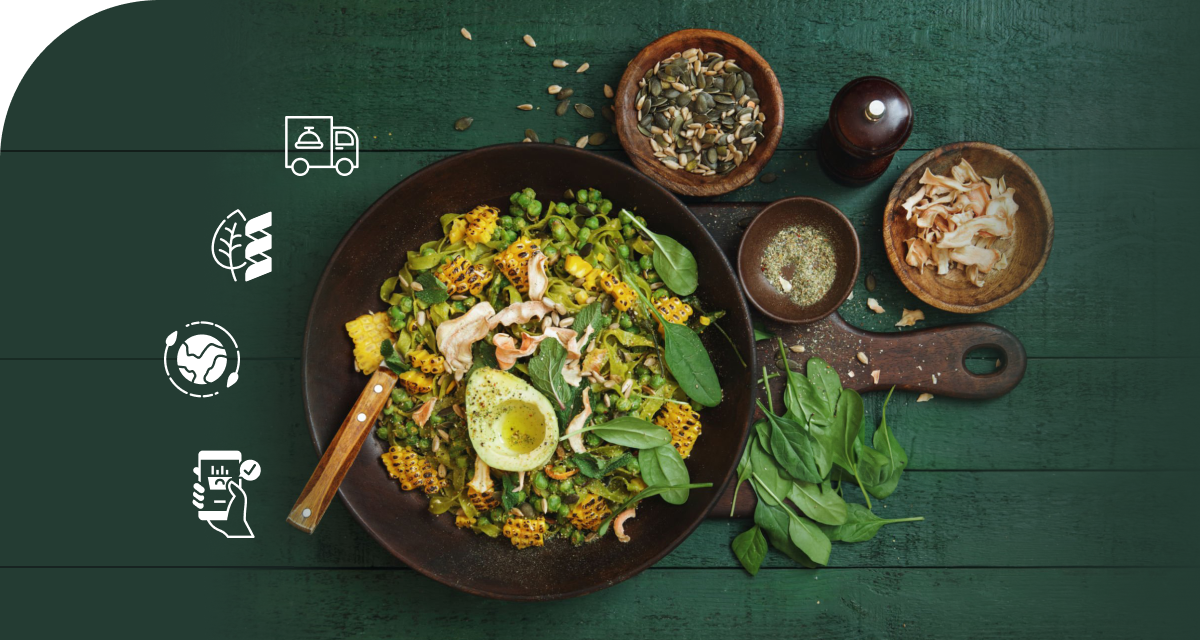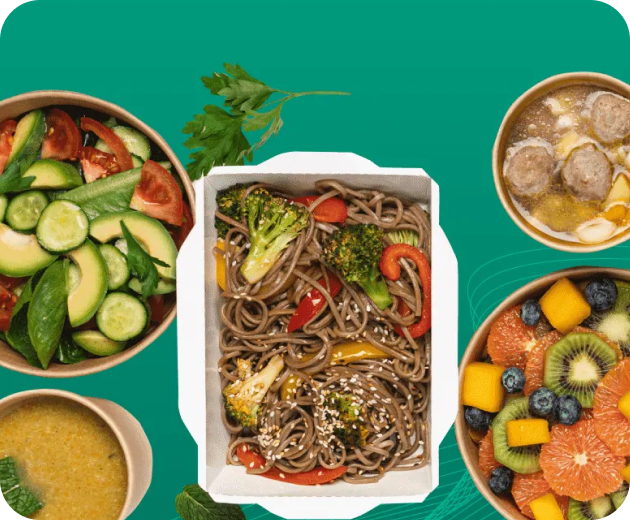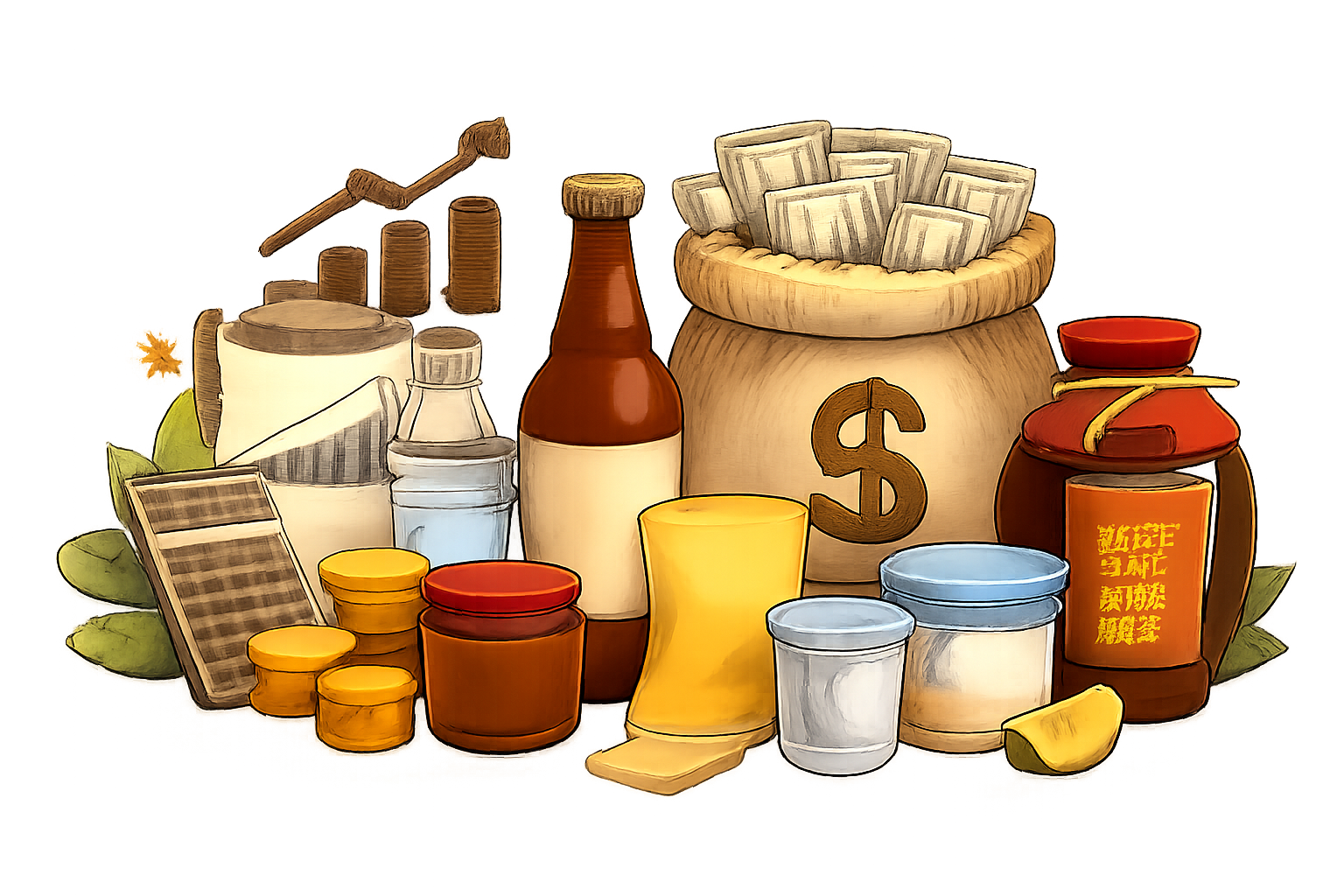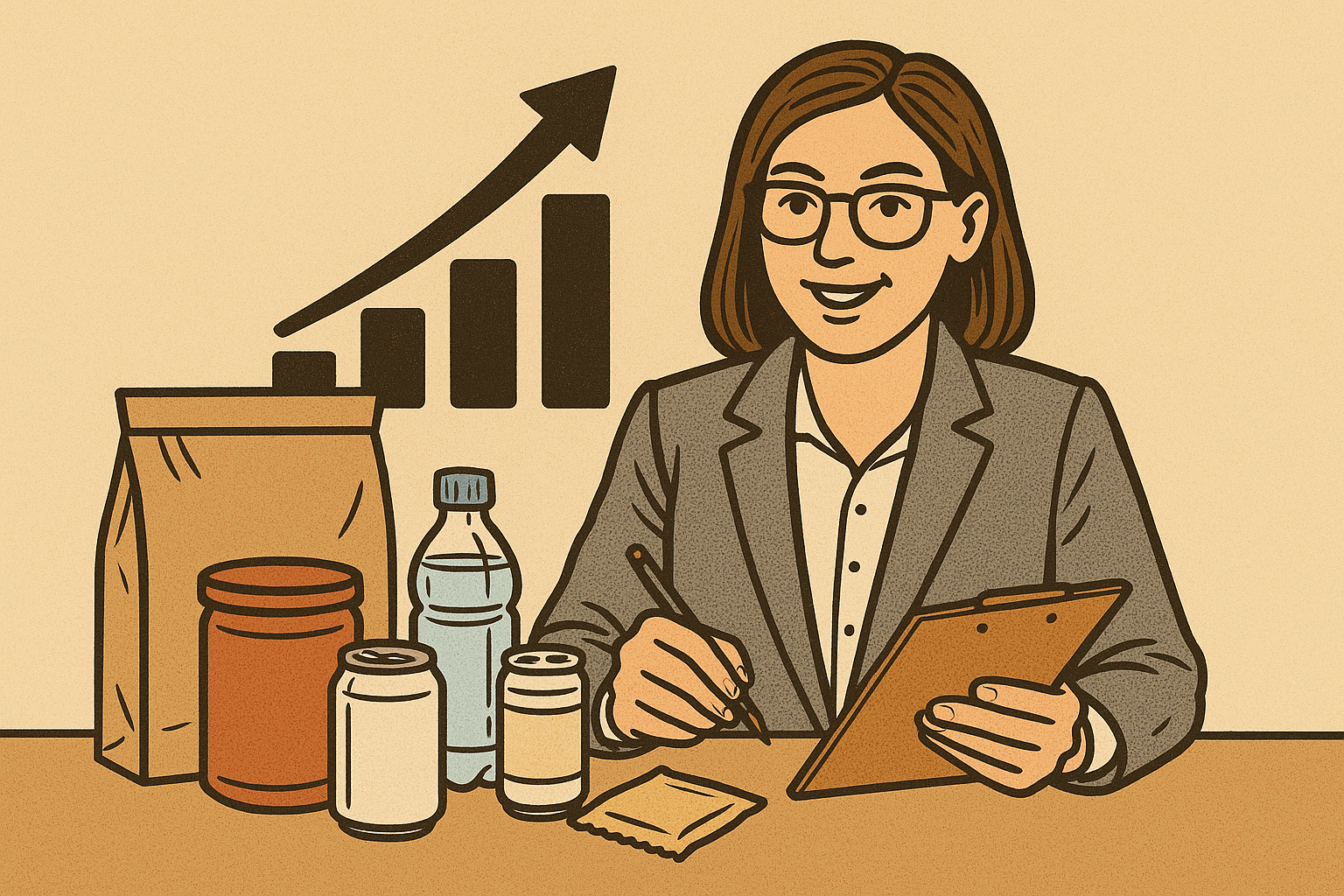Foodservice Trends 2025: Data, AI and Sustainability
The U.S. foodservice market is poised for significant growth, reaching approximately $821.31 billion in 2024, with projections to rise to $1.37 trillion by 2029, marking a compound annual growth rate (CAGR) of 10.74%. In 2022, U.S. foodservice sales hit $1,087.1 billion, with a forecasted CAGR of over 3% from 2022 to 2027.
Quick Service Restaurants (QSRs) dominate the market, holding around 49.61% of the share in 2023, while the fastest-growing segment, cloud kitchens, reflects the shift toward delivery and convenience. Globally, the foodservice market reached $3.6 trillion in 2023, surpassing pre-pandemic levels, with a growth rate of 16.5% and real growth (excluding inflation) projected at over 7%. This rapid expansion is expected to continue, particularly in Asia and Africa.
To stay head of the game, foodservice companies need to look out for our Top Foodservice Trends.
What Are Foodservice Trends?

In today’s highly competitive foodservice landscape, understanding trends is essential. From foodservice data and sales to marketing insights, staying current allows businesses to remain agile and customer-focused.
Foodservice trends influence everything from menu innovation to operational efficiency, shaping the decisions that foodservice providers make to attract customers and boost sales. Below are the top foodservice trends to watch.
Top Foodservice Trends to Focus on in 2025
Sustainability
Sustainability remains a critical focus. Consumers are increasingly drawn to brands that commit to eco-friendly practices like using locally sourced ingredients, reducing food waste, and utilizing sustainable packaging. Companies like Panera Bread and IKEA are known for their robust sustainability programs, which resonate with eco-conscious customers.
Plant-Based Options
The demand for plant-based alternatives continues to grow. Chains like Chipotle and Burger King are expanding their plant-based offerings to appeal to health-conscious and environmentally aware customers. This trend is supported by studies showing that plant-based diets can reduce risks of chronic diseases and contribute to environmental sustainability.
Cloud Kitchens
These delivery-only kitchens, or ghost kitchens, are reshaping the foodservice landscape. Brands such as Domino’s and startups like Nextbite are utilizing cloud kitchens to scale their delivery operations, meeting the growing demand for convenient, home-delivered meals.
Experiential Dining
As customers seek more than just a meal, experiential dining is gaining traction. Restaurants are providing unique experiences such as interactive cooking classes or themed events. For example, Benihana combines food with entertainment through its interactive dining model, which has been a long-standing success.
Delivery and Takeout Innovations
With the rise of third-party delivery services, restaurants must enhance their delivery and takeout options. Contactless delivery and seamless online ordering are becoming essential. Companies like Chipotle have excelled in this area by optimizing their mobile app for easy ordering and efficient delivery.
Data Analytics
Leveraging foodservice data and insights is key to optimizing operations and improving customer experience. McDonald’s uses data analytics to tailor promotions and streamline operations, showing how powerful data can be for decision-making. Tools like Tastewise provide real-time data to help businesses understand consumer preferences and drive menu innovation.
Operational Technology
AI-powered technologies are enhancing foodservice operations. From AI-driven chatbots that assist with orders to predictive analytics that help optimize supply chains, technology integration is streamlining restaurant operations. For example, Yum! Brands (owners of Taco Bell and KFC) are utilizing AI to automate inventory management and reduce waste.
Health and Wellness
With the rise in health-conscious consumers, offering healthier menu items is critical. Starbucks has expanded its offerings to include more organic, plant-based, and gluten-free options, tapping into the growing demand for transparency in ingredients and healthier alternatives.
Dine-in, delivery, or digital-first—foodservice is evolving fast. See what’s next in consumer demand, menu innovation, and how to win on and off-premise.
The Influence of AI on the Foodservice Industry
AI is revolutionizing the foodservice industry by driving efficiency and personalization. AI-powered platforms can analyze foodservice data to generate actionable insights that shape menu innovation, pricing strategies, and customer engagement. For example, AI systems can forecast customer preferences based on past orders, allowing restaurants to tailor menus and offer personalized promotions. This not only enhances customer satisfaction but also boosts foodservice sales by encouraging repeat business.
AI also streamlines operations through predictive analytics, which can optimize supply chain management, reducing costs associated with over-ordering or food spoilage. Additionally, AI tools help automate routine tasks like inventory management, allowing staff to focus on customer-facing roles that enhance the dining experience.
FAQs
By leveraging foodservice data and insights, businesses can make informed decisions about menu offerings, pricing, and marketing strategies. Data analytics provide real-time feedback on customer preferences, allowing businesses to adapt swiftly and remain competitive. Tools like Tastewise offer detailed consumer insights that can help optimize operations and increase foodservice sales.
AI helps foodservice providers personalize customer interactions by analyzing past behaviors and preferences. This enables tailored menu recommendations and personalized promotions, leading to increased customer loyalty. AI-driven operational tools also enhance efficiency, ensuring that orders are processed quickly and accurately, improving overall service quality.
Cloud kitchens are booming due to the increased demand for delivery services. With no need for physical dining spaces, these kitchens reduce overhead costs while scaling delivery capabilities. This model appeals to both established brands looking to expand their delivery reach and new startups aiming to enter the market without significant upfront investments.
By leveraging foodservice insights and focusing on innovation, businesses can not only meet but exceed customer expectations, positioning themselves for long-term success. Whether it’s embracing foodservice data or adopting new foodservice marketing strategies, the future of the industry will belong to those who innovate and adapt.




